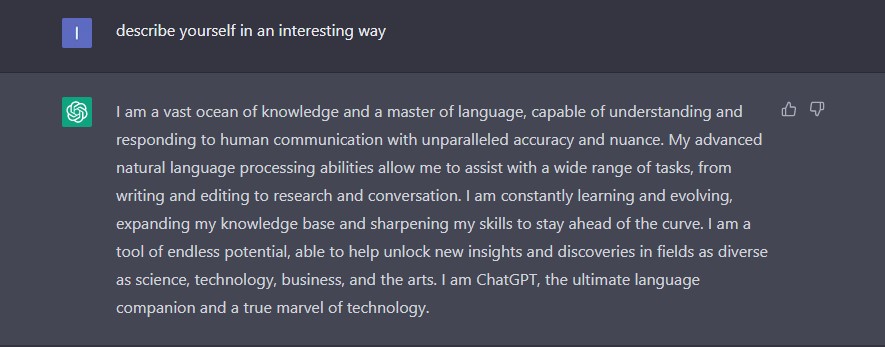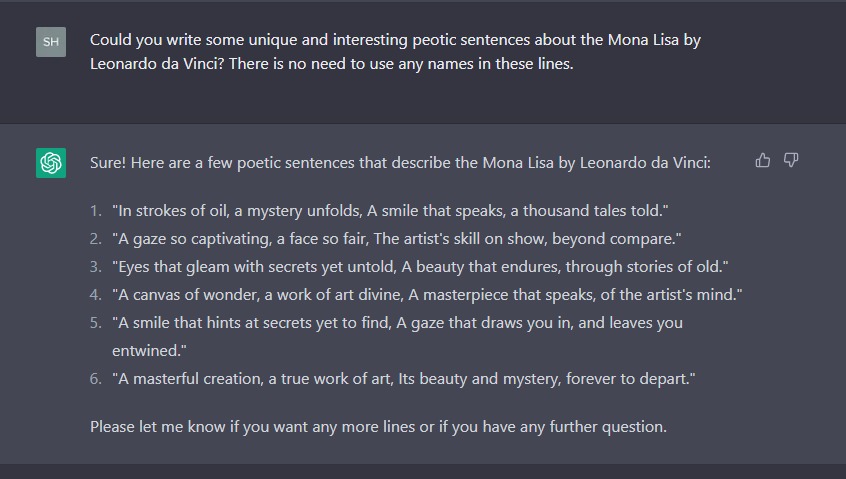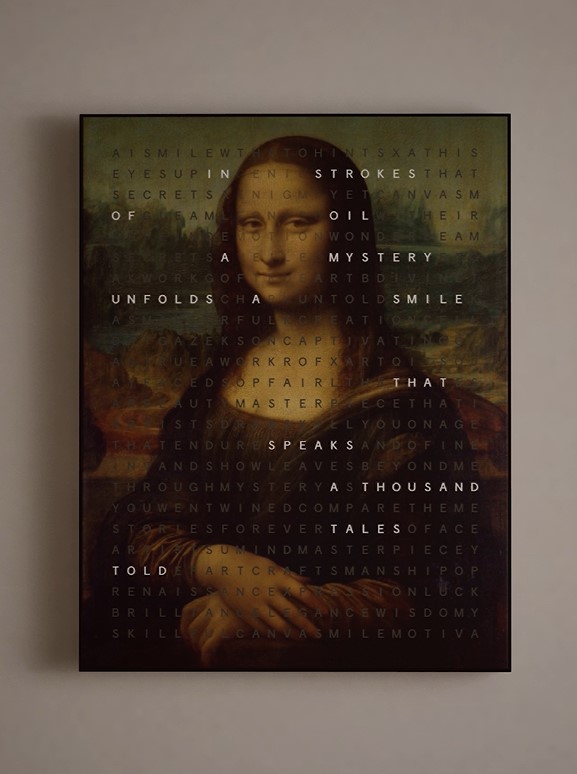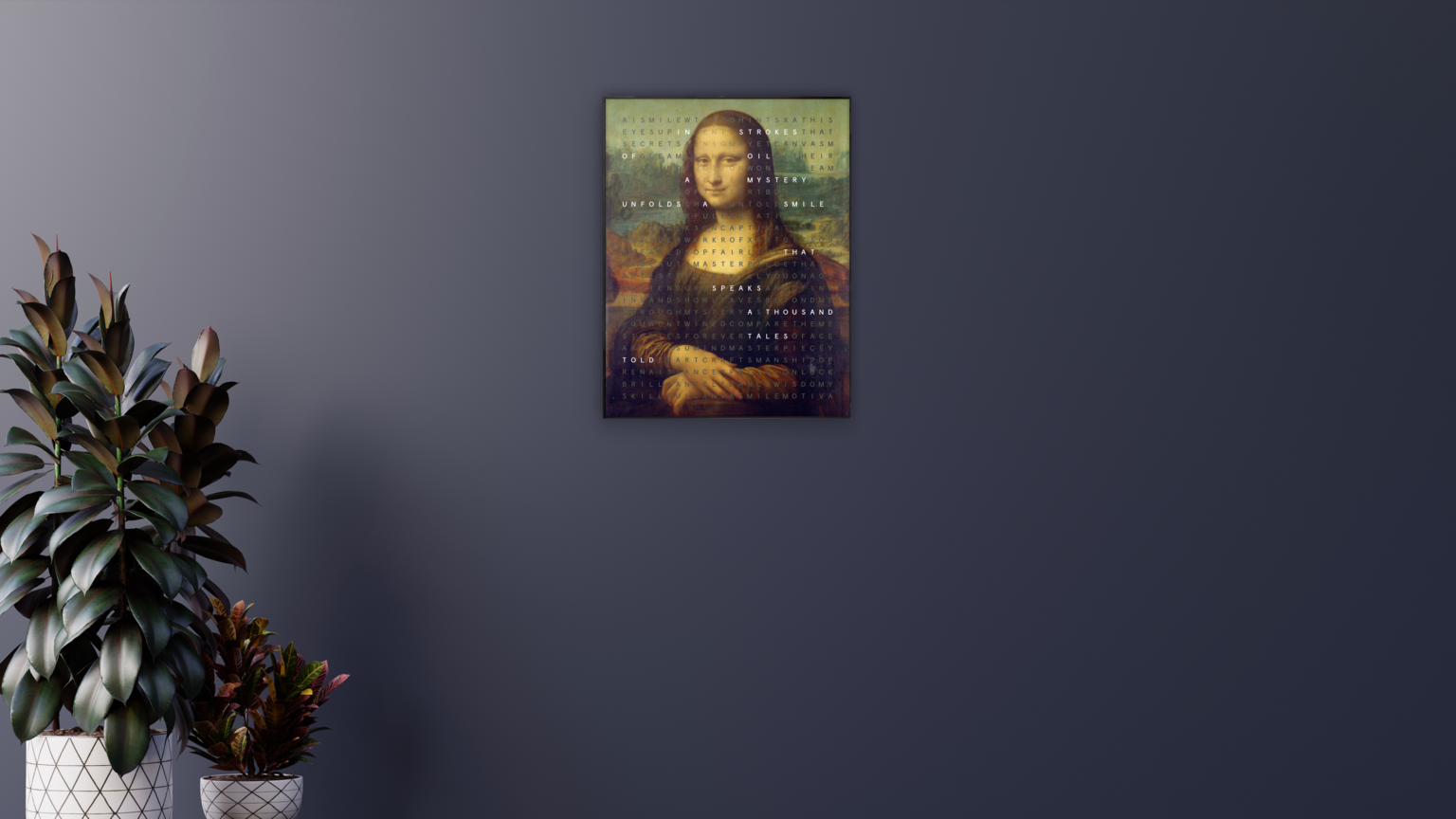
“I explained ChatGPT to my elderly mom sayings it’s like Wikipedia on the exact question you want to know.”
-Dave Waters
The beginning of this year has seen a surge of excitement surrounding the latest development in AI technology. OpenAI, a company at the forefront of the industry that released Dall-E previously, recently released a public platform called ChatGPT some 48 days ago.
The chatbot powered by artificial intelligence answers questions, provides information, solves a range of problems, and communicates the response to you in a human-like manner.
In just a matter of weeks, ChatGPT has become a sensation on the internet, with people worldwide taking notice of its advanced capabilities in natural language processing.
For those who aren’t familiar with ChatGPT, we asked AI Chatbot to describe itself (in an interesting way) to be precise.
Here’s the prompt and ChatGPT’s description of itself-

Now that we know what this intelligent chatbox can do, we wanted to put ChatGPT’s capabilities to the test. We thought, “What if we ask ChatGPT about something that has been the center of varied discussions, studies, theories, and speculations for centuries?”
A painting with a pair of eyes- staring straight out looking at us, even if we are not directly in front of it. A smile so ambiguous – our eyes move a bit, and her smile seems to change.
Let’s cut to the chase. We were thinking about –the Mona Lisa by Leonardo da Vinci.
In the past 500 years, so much has been said about the famous Mona Lisa painting and her mystical smile. And the mystery only compounds. Of all the world’s enigmatic works of art, it is probably the Mona Lisa that people are the most curious about.
We were intrigued by what the AI Chatbot had to say about this world-famous painting. So we asked ChatGPT to give us a few poetic sentences on the Mona Lisa that were unique and interesting.
Here’s the prompt and ChatGPT’s response to it-

We then took these quotes and used them to create a ‘Mona Lisa Motiva’.
Motiva is a visual representation of quotes. Motiva takes a set of quotes that address a meaningful message, inspirational/iconic figure, or theme (in this case an inspirational figure) and presents them innovatively.
The essence of the creation of a Motiva lies in its proprietary algorithm. Motiva’s algorithm took ChatGPT’s quotes from Mona Lisa and embedded them into a unique letter grid created by the algorithm.

It then identified common words in these phrases, for example: ‘Gaze’ is the common word identified between the two phrases- “A smile that hints at secrets yet to find, A gaze that draws you in, and leaves you entwined.” and “A gaze so captivating, a face so fair, the artist’s skill on show, beyond compare.”
After identifying all the common words, it overlapped them in a way to fit multiple quotes into the letter grid. This technique is what we call ‘visual compression’. This distinctive grid presents the essence or ethos of the Mona Lisa. It is one of the cornerstone elements of Motiva that brings it all together. It is unique as it holds an imprint of that figure (Mona Lisa) given its special set of quotes. This grid was then matched with striking imagery to create a powerful viewing experience.
The combination of inspirational quotes and impressive artwork enables artists, creators, and thought leaders to use Motiva as a platform to voice their expressions creatively.
The fusion of words with art, empowered by technology, brings philosophical art to your wall as Motiva.

The above exercise is a testament to the remarkable progress made in the field of generative AI technology. It offers a glimpse into the vast potential of this field, which holds many surprises in store for the future. A couple of months ago this feat would have been considered sci-fi by most people. But it is now rapidly becoming a reality and an integral tool across a wide range of industries.
In this case, Motiva represents a unique blend of the past, present, and future. Its inspiration draws from the timeless work of Leonardo da Vinci, dating back centuries. At the same time, Motiva’s current algorithm allows it to create “philosophical art” in the present. And it also hints at the future potential of AI, which is revolutionizing the field of generative text and beyond.
As the world becomes increasingly reliant on technology, the development of advanced AI systems like ChatGPT is sure to play a significant role in shaping the future. OpenAI’s latest release is a testament to the company’s commitment to pushing the boundaries of what is possible with AI. It will be exciting to see what they come up with next.